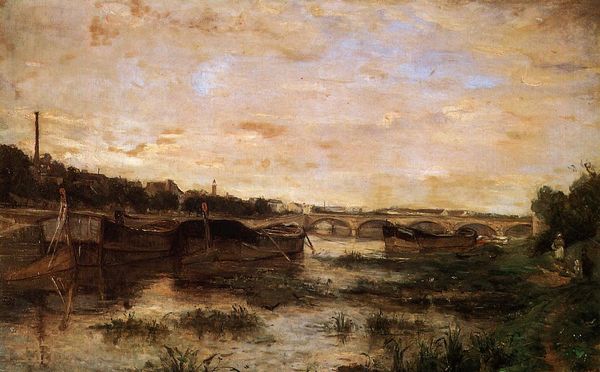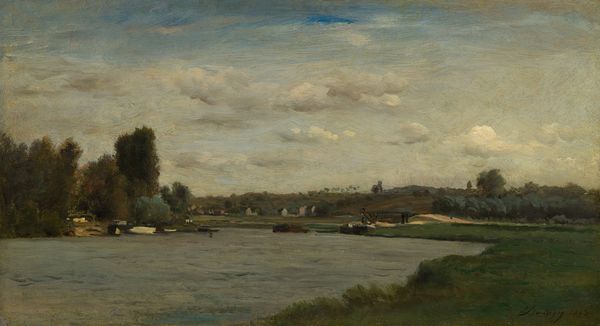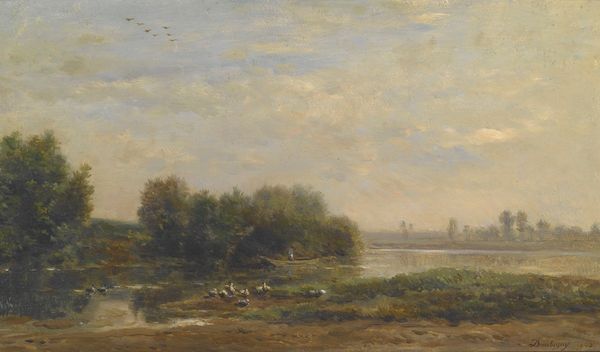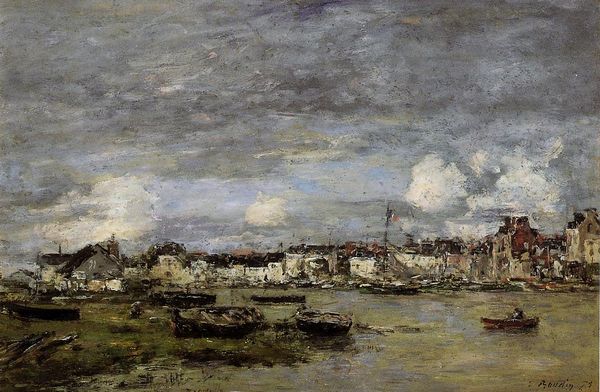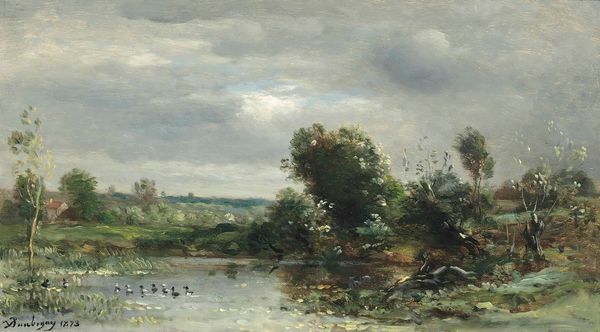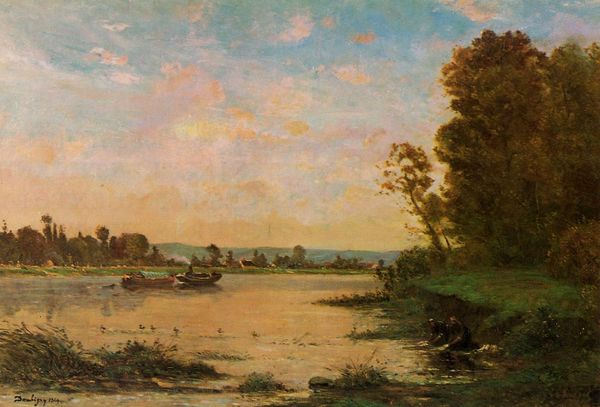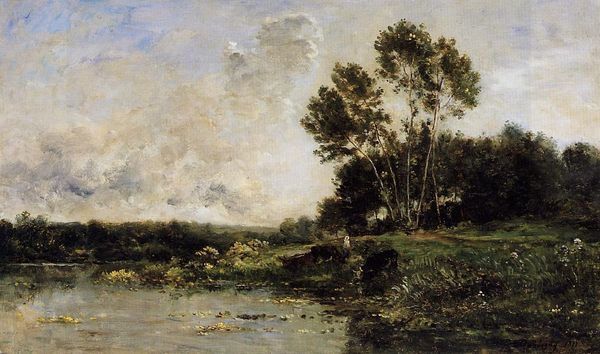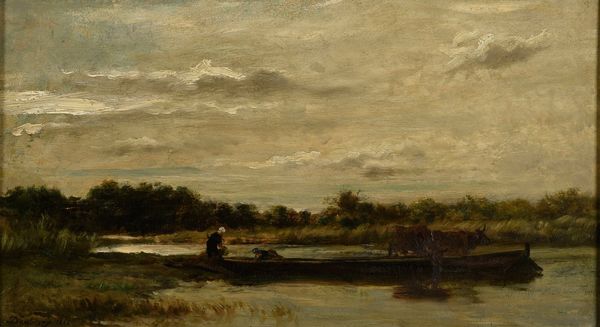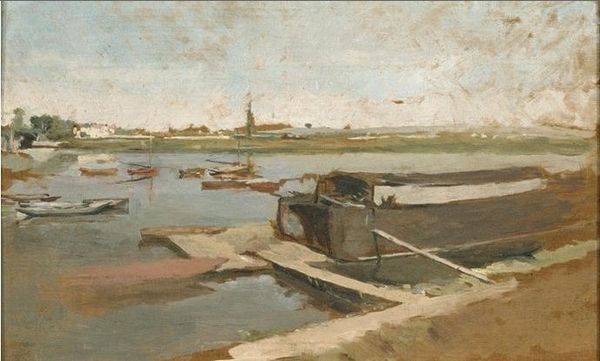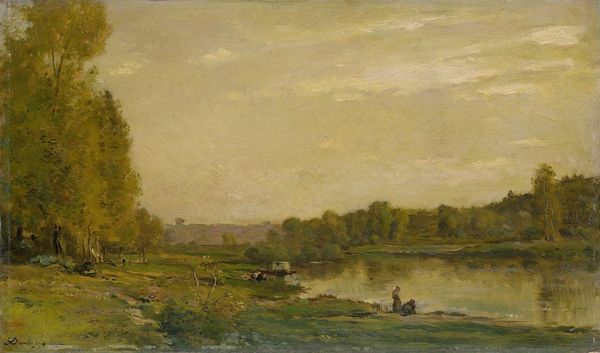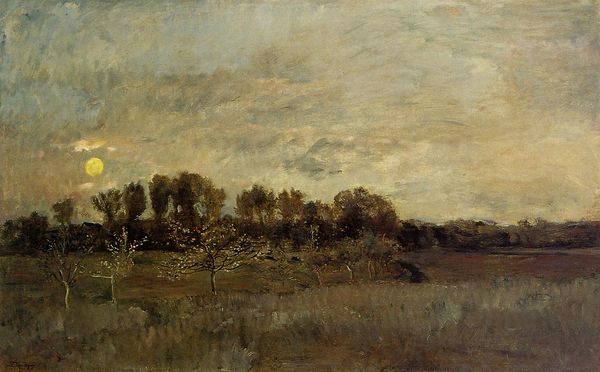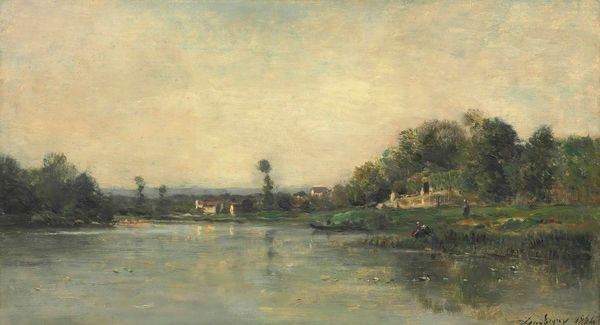
painting, plein-air, oil-paint
#
painting
#
impressionism
#
plein-air
#
oil-paint
#
landscape
#
river
#
impressionist landscape
#
possibly oil pastel
#
oil painting
Copyright: Public domain
Curator: Ah, yes, Charles-François Daubigny's "Washerwoman near Valdomdois." Looking at it, I find myself most drawn to the composition— the interplay of light on the water, the contrast between the smooth surface of the river and the textured foliage. Editor: It does evoke a sense of tranquility, doesn't it? The hazy light softens everything, but my immediate thought goes to the labor suggested in the title. I wonder about the washerwoman, invisible yet central to our understanding. Curator: A valid point. From a purely formal perspective, notice how Daubigny uses broad, confident brushstrokes, creating a sense of immediacy, particularly in rendering the foliage. It’s less about detailed representation, more about capturing an essence. The diagonal recession of the river and embankment guide the eye harmoniously. Editor: Indeed, yet it feels essential to acknowledge that, within these picturesque rural scenes, there were real people performing strenuous work, largely unacknowledged. Where does the ‘essence’ you speak of position these figures? It seems a visual celebration of idealized labor that ignores the lived experiences of rural, often poor, women. Curator: It’s less of a celebration, and more an acknowledgement of tonal and textural contrasts. Consider the cloud formations; their placement and subdued hues subtly counteract the heavier forms below, providing both balance and gentle gradation in color relationships. Editor: The balance is aesthetic, but is it honest? Looking closely, it seems impossible to miss the political weight implicit in Daubigny’s choice to paint “washerwomen.” It seems as if Daubigny elides crucial elements to romanticize his landscapes for bourgeois consumption. Curator: I perceive Daubigny less as consciously ignoring these things, but simply striving to work through the established aesthetic norms of landscape painting and to advance its pictorial language. His innovations, particularly with the manipulation of paint viscosity, cannot be ignored. Editor: These "innovations", these painterly touches, have profound ethical and political significance because of what, and who, they displace. In thinking about its display within a private collection, for instance, who are we really inviting to share in its view of life and work? Curator: A keen, insightful challenge. It certainly opens up multiple avenues of interpretive exploration and invites us to reflect more deeply on the painting's place both within and beyond the frame. Editor: Yes, it underscores art's entanglement with its social world and inspires one to acknowledge how, for every brushstroke and innovation, decisions are being made about whose story is visible and whose labor and reality remain obscured.
Comments
No comments
Be the first to comment and join the conversation on the ultimate creative platform.
